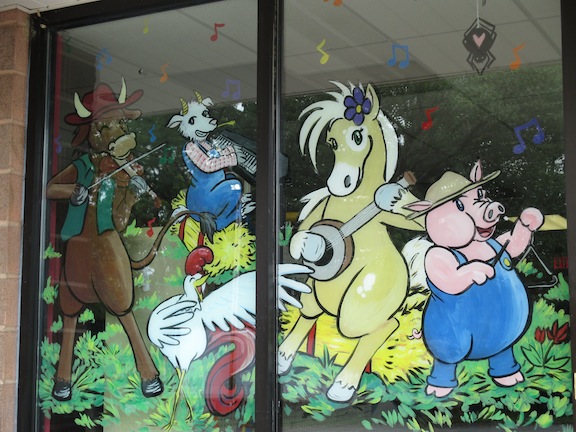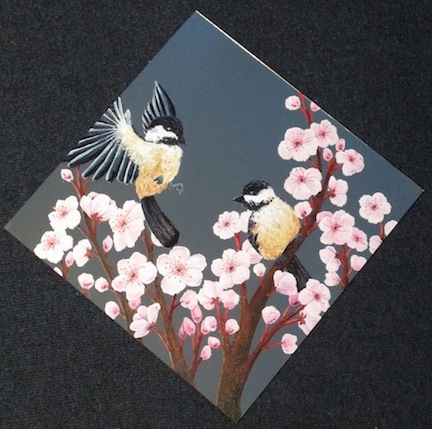So to combat problem number two, I started looking into reverse painting, which means painting backwards on the glass then using a mirror spray to add the background last. This way the glass completely covers the artwork, not only protecting it like glass in a frame, but also making it easy to clean. I've done reverse painting a few times before, most notably the daycare window art I did awhile back, but never anything more detailed than a cartoon.
 |
| See more of the daycare windows in my portfolio. |
In doing my mirror painting I've learned/ reaffirmed a few things:
1) Having no surface tooth sucks. A smooth surface means paint slides all over the place, making blending, an already difficult thing to do backwards, frustrating beyond comprehension.
2) Light not only shines through the glass, but through any layer of paint not thick enough to block all of it. This means you get to see lots of streaks every time you flip your painting around to check it, and painting on glass means ten times as many streaks. I was constantly blotting and filling in these streaky patches.
3) You get dizzy flipping the glass around to constantly check your painting progress. If I try this again, I will be rigging a second mirror to see my painting's reflection as I work.
4) Acrylics are probably not the best option if you're aiming for high detail and shading. Even after they dry, painting over acrylics with a second layer sometimes causes it to break up on the smooth surface. Next thing you know, there are chunks in your painting when you flip it over. Add to this, the fast drying rate of acrylics and sometimes things dry in place before you realize how bad the color blend looks. If I wasn't so against the messiness of oils and the idea of having to wait months for it to dry properly so I could mirror coat this, I would have used them.
5) The mirror coating I used is not as clear as it would be creating a mirror using the silvering process. That said, I'm not sure what the silvering process would do to the paint, though I highly speculate nothing good.
Despite the hiccups, in the end, I was pretty happy with my final painting.
 |
| I think I have a thing for chickadees and cherry blossoms. |
The mirror coating worked pretty well and while the blending was messy in some spots, it all came together rather nicely. I would like to make these mirror paintings available for purchase, so I will be revisiting and perfecting this idea. Stay tuned to see what I come up with. Until then…
Thanks for reading.


No comments:
Post a Comment